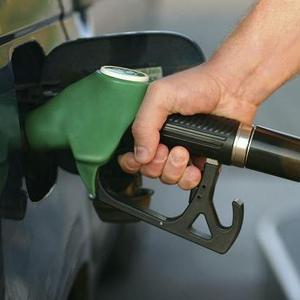New pump labels in EU provide clarity on biofuels content

October 12, 2018
BY Ron Kotrba
The EU introduced a new, harmonized set of fuel labels Oct. 12 to give drivers better information on the suitability of fuels for their vehicles throughout Europe. The labels will help avoid misfueling and inform drivers on the environmental impact of their fueling choice, according the European Commission.
The growing diversity of fuels on the European market—numerous blends of ethanol, biodiesel, synthetic diesel, and a variety of gaseous fuels such as hydrogen, compressed natural gas, liquid natural gas and liquid propane gas—has created the need for clearer information on the fuels sold at fuel stations, the EC stated Oct. 12.
Ethanol blends for spark-ignition (“gasoline”) engines are now designated with a circle encompassing an “E” and a numeral to represent the blend concentration of ethanol, such as E5, E10 and E85.
Advertisement
Biodiesel blends for compression-ignition (“diesel”) engines are now designated with a square encompassing a “B” and a numeral to represent the blend concentration of biodiesel, such as B7, B10, B30, B50 and B100.
Synthetic diesel fuels are also designated with a square in which the letters “XTL” are displayed.
Gaseous fuels are designated with a diamond in which the abbreviations “CNG,” “H2,” “LNG” and “LPG” are used.
The French Federation of Oilseed and Protein Producers (FOP) said the new labeling requirements are in line with the actions led by the organization to reinforce an essential outlet for oilseed producers, “and make visible the green fuel from our territories,” FOP stated in a press release. “It also demonstrates the contribution of the French vegetable oils and proteins sector to the energy and ecological transition.”
Advertisement
FOP also noted that, in addition to B7, consumers will soon be able to choose B10 at the pump. “Authorized last June by the government, this new fuel, which contains up to 10 percent of biodiesel, symbolizes the ongoing efforts of the industry to participate in the decarbonization of transport, and accelerate the development of sustainable mobility,” FOP stated.
"This display of B7 and B10 at the pump is a positive signal for both French farmers and motorists,” said Arnaud Rousseau, president of the FOP. “By refueling B10, the French can choose to give a boost to French agriculture and make a gesture for the environment.”
For more information on the labeling requirements, click here.
Related Stories
CoBank’s latest quarterly research report, released July 10, highlights current uncertainty around the implementation of three biofuel policies, RFS RVOs, small refinery exemptions (SREs) and the 45Z clean fuels production tax credit.
The U.S. Energy Information Administration maintained its forecast for 2025 and 2026 biodiesel, renewable diesel and sustainable aviation fuel (SAF) production in its latest Short-Term Energy Outlook, released July 8.
XCF Global Inc. on July 10 shared its strategic plan to invest close to $1 billion in developing a network of SAF production facilities, expanding its U.S. footprint, and advancing its international growth strategy.
U.S. fuel ethanol capacity fell slightly in April, while biodiesel and renewable diesel capacity held steady, according to data released by the U.S. EIA on June 30. Feedstock consumption was down when compared to the previous month.
XCF Global Inc. on July 8 provided a production update on its flagship New Rise Reno facility, underscoring that the plant has successfully produced SAF, renewable diesel, and renewable naphtha during its initial ramp-up.
Upcoming Events










